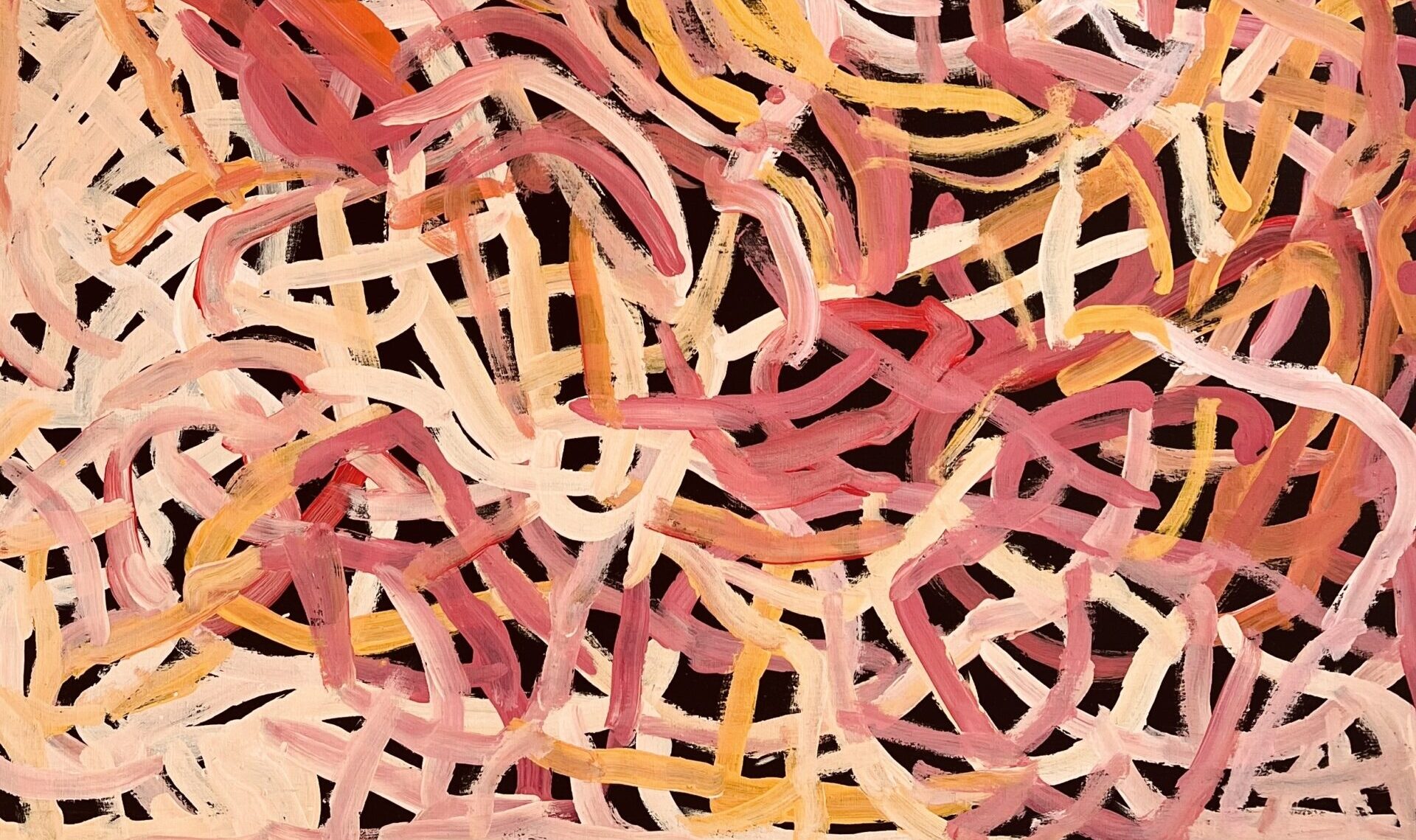EMILY KAM KNGWARRAY: EVERYTHING At Frieze Masters

D’Lan Contemporary is thrilled to be participatiing in Frieze Masters 2023 and as the first Australian gallery to exhibit at the prestigious Fair, we will proudly present a select group of works by Australia’s most critically acclaimed and celebrated contemporary artist – Emily Kam Kngwarray (1910-1996) – to a global audience of artists, gallerists, collectors, and art lovers.
No other Australian First Nations artist has captivated the local and international imagination like Anmatyerre artist Emily Kam Kngwarray.
An elderly Indigenous Australian woman who rarely left the boundaries of her ancestral Country in the arid Western Desert, Emily was indifferent to Western art traditions and political or social issues. Yet, from 1989 to her death in 1996, Emily was an outstanding abstract painter who had critics question the relationship between Modernism and Central Desert painting.

Emily Kam Kngwarray portrait
© Greg Weight / Copyright Agency, 2023
Emily painted ‘everything’, capturing all she knew about her land’s life and spiritual cycles in the new medium of acrylic paint and in turn, shifted the parameters of contemporary Australian First Nations art from its formal, iconographic tradition.
The nine works in this exhibition have been specially selected for their exceptional quality, and to represent the distinct categories in Emily’s oeuvre from 1990 to 1996: bold stripes related to ritual body painting, nuanced chromatic dot paintings and the bouncing, and dragging fields of colours relating to women’s ceremonial dance and song.
In paintings from 1990 to 1991, Emily specifically explored the path of the atnulare yam from Alhalkere – the principal motif of her ceremonial designs and the central theme of her oeuvre. The skeletal structure of sinuous lines, overlaid with waves of dots, recalls the yam’s underground growth paths, and by association the emu, which feeds on its flowers and seeds. The rhythmic thrust of Emily’s brush on canvas invoked the subterranean life of the yam and is a vital component in communicating the vitality of its Dreaming.
From 1992 to 1994, Emily entered what has been called her, ’high colourist phase’ – characterised by the merging and blending of dots and the various configurations of their tracks across the canvas. Emily’s whole body was engaged in mark-making just as it was in dance, and she would often sing as she painted; a method that stems from the cultural practice of singing Country.
Emily’s style evolved directly out of the ceremonial body painting rituals of women, where specific markings are applied to the upper bodies using fingers or brushes dipped in desert ochres. In 1994, after Emily began working on paper, the profuse dotting and linear patterns of earlier years ceded to bold, austere black stripes on white. These soon evolved into rapidly applied linear markings in colours that evoke nature and earth.
Emily’s work was first shown internationally at the 47th Biennale di Venezia in 1997 and has since gained tremendous critical stature within the greater context of global contemporary painting.
In recent years, Emily’s work has been exhibited in survey exhibitions in Australia and Japan and, in association with D’Lan Contemporary, at Gagosian Los Angeles, Hong Kong and Paris.
Now, in 2023, with a solo exhibition at Frieze Masters and an upcoming major retrospective of her work at the National Gallery of Australia, Anmatyerre woman, Emily Kam Kngwarray rightfully takes her place alongside the greatest masters of international modern and contemporary art.
EMILY KAM KNGWARRAY: EVERYTHING
Stand B10 | Frieze Masters 2023 | 11-15 October, The Regent’s Park, London
Above: Emily Kam Kngwarray circa 1910 – 1996 | Kame Colour 1995 (detail) | synthetic polymer paint on linen | 151 × 120 cm | © Emily K Kngwarray/Copyright Agency, 2023
Spelling of Emily Kam Kngwarray
Dr Jennifer Green, a prominent linguist who has worked with the women of Utopia since the 1970s – and who was involved in the batik workshops where Emily and the Utopia women first began painting – has recently contributed an essay for the exhibition catalogue of the upcoming major retrospective of Emily Kam Kngwarray at the National Gallery of Australia. In this essay and in other written material that accompanies the exhibition, all words in the Anmatyerr language, including the spelling of Emily’s skin name Kngwarray, are spelt following spelling conventions found in the Anmatyerr dictionary.